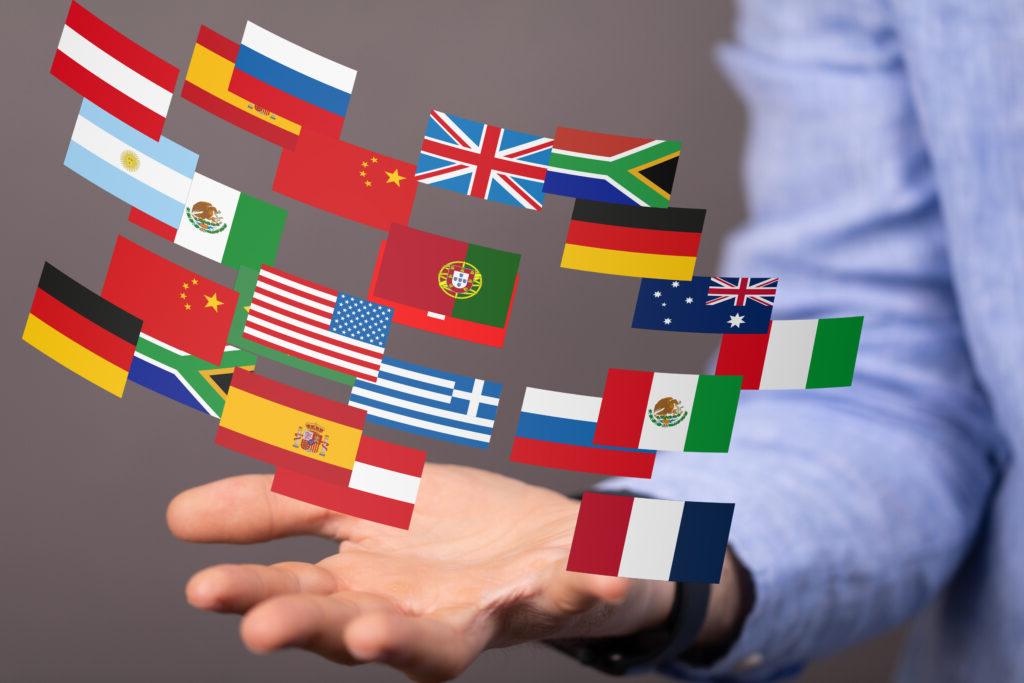Want your children’s book translated into another language? Answer these 7 questions first!

By: Gabriella Aldemann
Whether you’re an author or a publisher, you’ve likely grappled with lots of questions before publishing your book. For the translated edition(s), there are many more things to consider – questions you may not have thought about. Here are seven key points to clarify that can greatly impact the translation of your children’s book, regardless of whether it’s a picture or chapter book.
-
Who is your audience, and what is your message?
Your translator is likely reading your book for the first time, so pitch it to them. Point out specific themes, hooks, objectives, and selling points. Describe your ideal reader – their reading level and cultural knowledge. Let them know if your book is for children inside the United States, abroad, or both. This information will influence the choices your translator makes and help them produce a better translation. For example, it will dictate whether or not they need to explain cultural terms and traditions.
-
Should the title be translated literally or creatively?
Discuss the title with your translator. You may want a literal word-by-word translation to establish a parallel vocabulary between the two languages. Or you may choose to change the title to make it more idiomatic and enhance its marketability. The process of transcreation, which is about recreating the experience rather than the words, is often needed in literary translation to prevent the book from sounding … well … like a translation.
A great example of a transcreated title is the bilingual picture book We Laugh Alike/Juntos nos reímos (written by Carmen T Bernier-Grand, illustrated by Alyssa Bermudez, and published by Charlesbridge). The literal translation of “we laugh alike” into Spanish (“nos reímos parecido”) would sound like “we laugh similarly” to a Spanish speaker and is not very catchy. Instead, the author chose the Spanish title Juntos nos reímos, which means “we laugh together.” While not a direct translation, the translation is catchy, uplifting, and remains true to the book’s message.
-
Should the characters’ names be translated?
This decision will depend on the book’s objective and intended audience. I recently translated a book in which the main character, Ellie, deals with her mother’s psychological trauma. We decided to translate her name to Elita in the Spanish edition for two reasons: 1) The name “Ellie” is hard to pronounce in Spanish, and 2) the book is intended to help children in therapy, so we wanted the reader to connect intimately with the main character.
In some situations, however, branding may be an issue. Take Mikey Mouse, for example. Originally, Disney wanted readers in other languages to connect with Mickey Mouse, so they translated his name into those languages. But Hispanic children nowadays have no idea who El Ratón Miguelito is. Why? Disney stopped translating the name for publicity and marketing reasons. Mickey is no longer just a character in a comic strip; he’s a world-renowned brand that is not unlike Pepsi or McDonald’s.
That said, authenticity is also a factor when translating names. If your character represents a particular cultural background, you may need to keep the name to ensure your book remains authentic. -
Could images get lost in translation?
Picture books are special cases because both text and images tell the story. But will the images translate across cultures? Will kids in another country respond to them like children in the US? This is a great question to ask your translator. They can evaluate your images and ensure they send the right message to the target culture.
And here’s another tip: be sure to have any words found in the images translated. Nothing is more jarring than immersing yourself in a Spanish-language picture book only to see a big banner in an image of a child’s birthday party that reads “Happy Birthday!” instead of “¡Feliz Cumpleaños!” -
Are there any cultural sensitivities to consider?
Identify all sensitive topics in the book, such as death, illness, divorce, or family strife. How readers experience or respond to these topics may differ from culture to culture. Remember that some cultural sensitivities may be less apparent. For example, children in the US may address their elders or teachers in ways that may not be appropriate in other cultures. People in Latin America weave stories of monsters, ghosts, saints, and dead relatives into their daily lives, which US kids might find scary.
Failing to consider cultural sensitivities can have dire consequences for your book. The cartoon Peppa Pig exemplifies how serious and unexpected cultural differences can be. In Australia, an episode of Peppa Pig was banned because the beloved cartoon character befriends a spider and names him Mr. Skinnylegs. But kids in Australia are not taught to see spiders as cute or friendly because there are many poisonous varieties, so the episode was taken off the air. Take a lesson from Peppa Pig and ask your translator to flag any problematic cultural associations.
-
Do you need cultural padding?
Like sensitive topics, some terms and traditions may not translate from culture to culture. Talk to your translator about your audience. How multicultural are they, regardless of the language they speak? Cultural padding means adding a few extra words to explain terms that are not common in the target culture. For example, your translator may need to describe a “s’more” or explain the concept of “Show and Tell” at school.
-
Does your text include tricky elements, like onomatopoeias, songs, jokes, regionalisms, slang, or puns?
Although you likely had a lot of fun inserting these are often the most fun parts of children’s books to write, these tricky elements will usually lose their appeal if translated literally. That’s because the rhymes and references will literally get lost in translation. It’s important to either localize or transcreate these elements. Localization involves replacing them with something similar in the target culture or language. Transcreation means writing something in the target language for a similar effect or experience. Discuss these tricky items with your translator and be open to their ideas about what might work best in the target language and culture. Ask for these solutions to be translated back into English to help you understand what the translator is trying to do.
Reach new audiences with translation!
Translation is all about reaching a new audience. The trick is to keep your potential readers in mind every step of the way – from the first draft of the translation to marketing the final product – as if you were writing the original. Your translator can be a wonderful resource throughout the whole process, so consider hiring them for more than the translation. They can serve as your cultural advisor as you answer these seven questions, finetune your product, and even prepare your promotional materials.
When authors and translators collaborate closely and work together with openness and trust, the translation process can be downright magical!
About the Author
 Gabriella Aldeman is an English-to-Spanish translator for education nonprofits and children’s books, as well as a picture book writer. She is a member of The Society of Children’s Book Writers and Illustrators (SCBWI) and serves on the Public Relations Committee of the American Translators Association. Follow her on Instagram where she plays with words and obsesses over coffee.
Gabriella Aldeman is an English-to-Spanish translator for education nonprofits and children’s books, as well as a picture book writer. She is a member of The Society of Children’s Book Writers and Illustrators (SCBWI) and serves on the Public Relations Committee of the American Translators Association. Follow her on Instagram where she plays with words and obsesses over coffee.








Leave a Comment